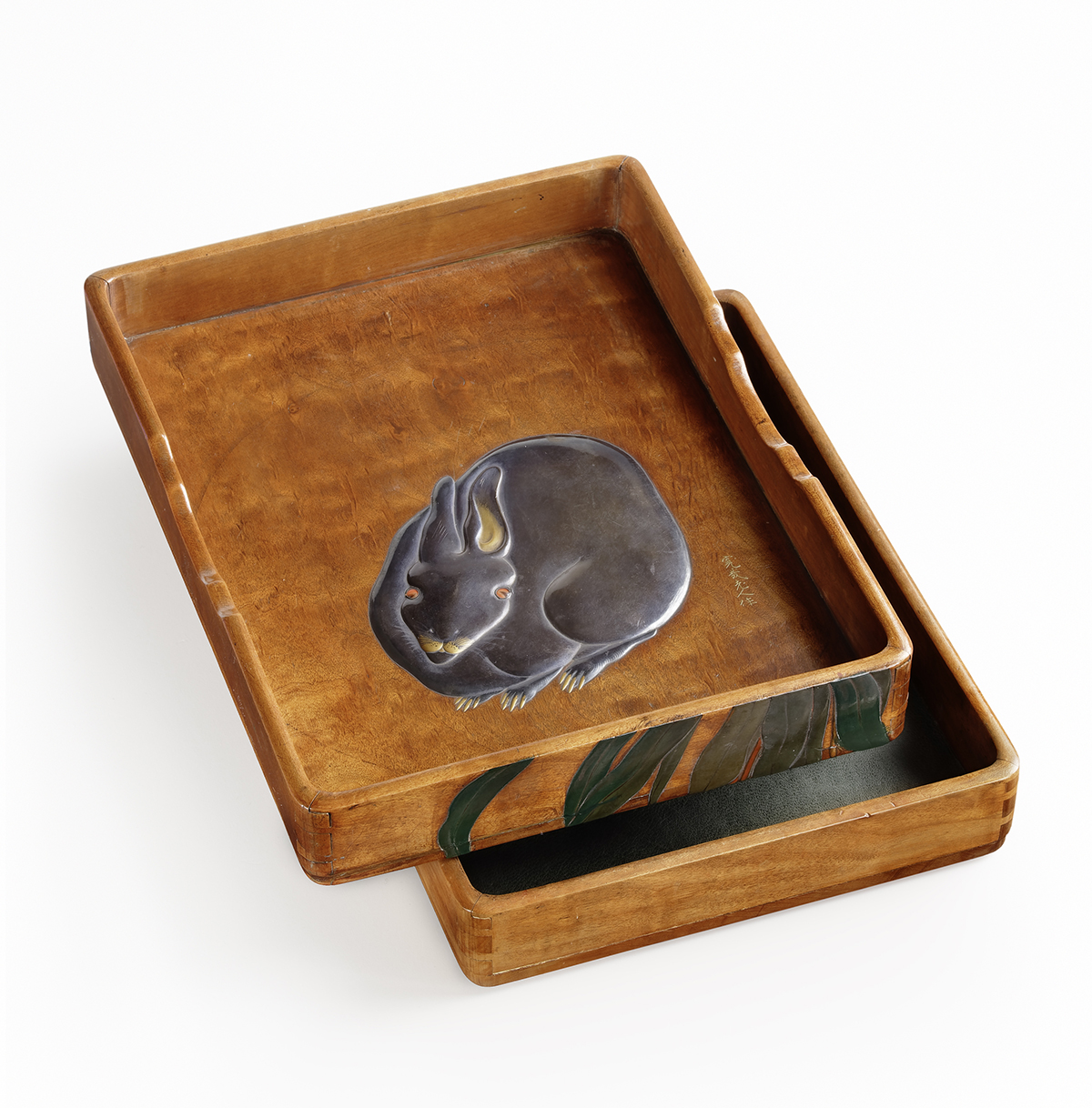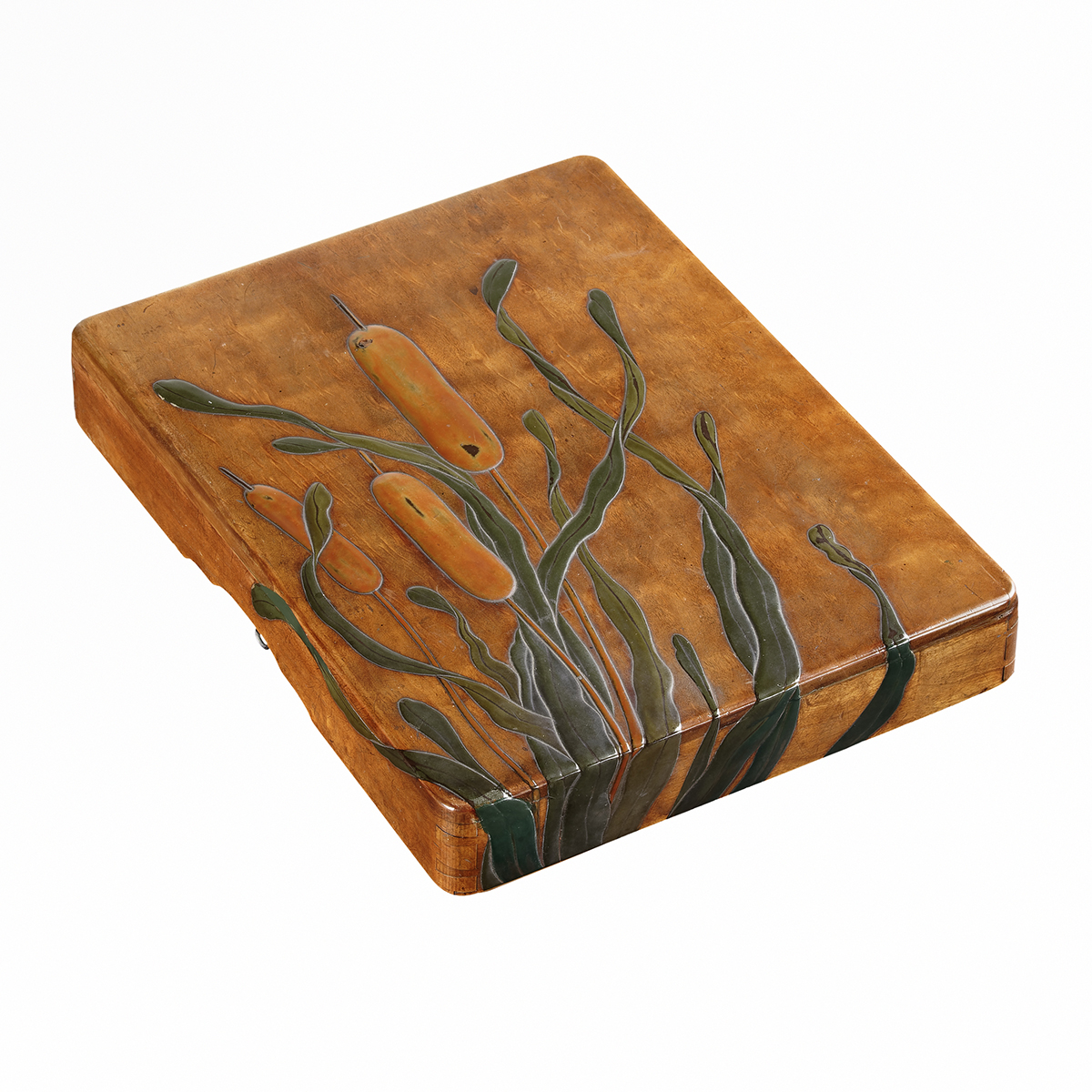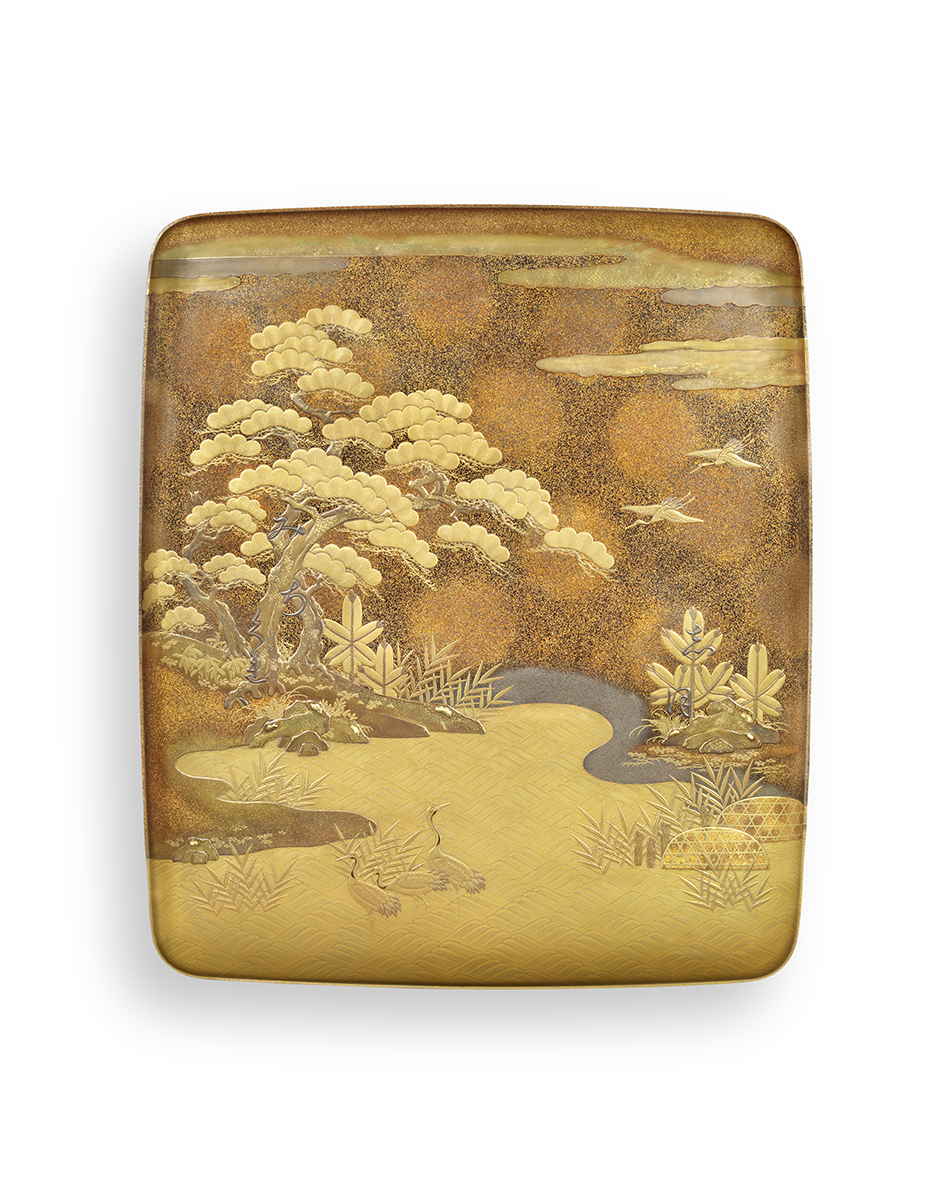Usagi bunko
Lacquer
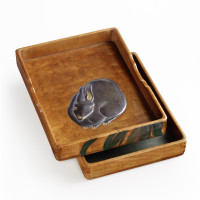
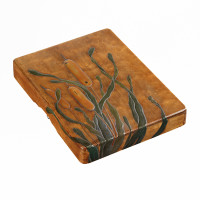
- Contact Us
-
Material
Wood and lacquer
-
Size
24.5 x 18.5 x 4.0 cm
-
Period
Circa 1855.
Description
”Gama ni usage bunko” by Koma Kansai II (1797-1857)
[Bunko decorated with the design of Typha latifolia (Gama in Japanese) and the Hare]
Signed “Kansai rōjin saku” [Made by Kansai, an old man
Seal “Inu” (Dog) which might be a collection category assigned by the owner
The myth of the “Hare of Inaba”
Oonamuchi had many elder brother gods. On one occasion, Oonamuchi accompanied these gods on a trip to visit Princess Yakami, who was living in Inaba Province. Each of the brothers were hoping to gain her hand in marriage, and Oonamuchi carried all their bags. On their way there, they happened to see a white hare that was suffering after having its skin torn off because it had cheated a group of wanizame (a type of mythological shark or crocodile).
The elder brother gods didn’t bother to listen to the hare’s troubles, and they suggested a treatment that caused the hare even more suffering. Soon thereafter, Oonamuchi happened to come across the hare and told it a good method of treatment after carefully listening to its tale, and then the hare fully recovered.
This hare is known as “Inaba no shirousagi” (the White Hare of Inaba) in the Kojiki. The hare predicted that Oonamuchi would actually be the one to marry Princess Yakami. This tale plays the role of elucidating the nature of how Oonamuchi became a king.
Oonamuchi, who saved the White Hare of Inaba and married Princess Yakami, survived various trials and tribulations, married several goddesses, and became the god and master of the land by pushing his elder brother gods aside, in the end earning the name “Okuninushi no kami.”
The Kojiki ( 711-712 AD) is a collection of myths concerning the origin of the islands forming Japan and the kami, deities of Shintoism. With the Nihon shoki, the legends contained in the Kojiki inspired many practices and beliefs of Shintoism.
This former Suzuribako/ Bunko was published in the Rokusho Volume 24 magazine, with the caption “Spikes of plant Typha latifolia (Gama), wood and lacquer, suzuribako”
The design of Hare is based on a story known as the Inaba no Shiro-usagi (The White Hare of Inaba), which appears in the Kojiki (711-712 AD), the oldest chronicle of Japanese mythology. The white hare appears in Volume of the Age of Gods, concerning the foundation of Japan before the birth of first Emperor of Japan Jinmu.
The work is published on pages 16-17, in the Rokusho Magazine Volume 24 : Sekai o odorokaseta makie (Lacquer that astounded the world), ISBN 4-89511-554-2, March 2005, Maria Shobō, Kyoto.
蒲(がま)ノ穂木地蒔絵硯箱。世界を驚かせた蒔絵、骨董, ROKUSHO, Volume 24.緑青
Koma Kansai II: http://makie-museum.com/mkansai.html#2
The judging from the signature style on the bunko and the bold design, it is most likely that the bunko was made by Koma Kansai II (1797-1857). His signature is shown on page 100 in the afore-mentioned magazine Rokushō 24.
Box Old kiribako
Hakogaki “Gama ni usage bunko” with seal “Inu” [Bunko decorated with the design of Typha latifolia (Gama in Japanese) and the Hare]
